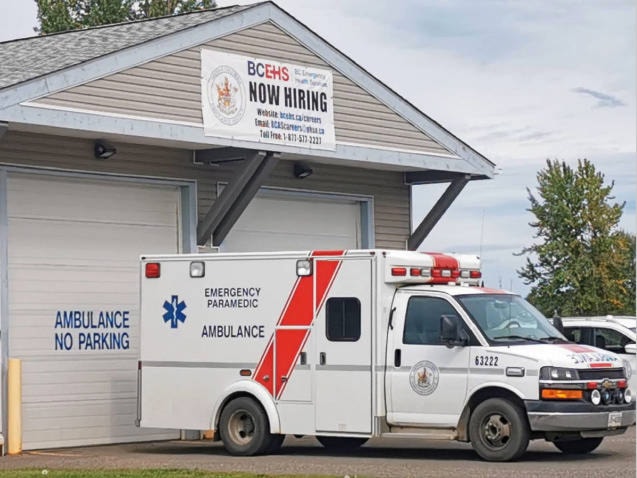The retirement of two longtime paramedics within BC Emergency Health Service’s (BCEHS) Houston station has the community worried.
Michella Brown and Steve Bryant are retiring from the Houston station as paramedics after almost 39 years of combined service. However, with two members retiring, several community members are worried that this will leave the Houston station understaffed and would affect the community in case of emergencies.
The BCEHS spokesperson Shannon Miller told Black Press Media in response to these worries that there will be “no loss of service” with the retirement of the two longtime members.
Currently the Houston station has 16 paramedics, two ambulances and one community paramedic vehicle. During the 2020-21 fiscal year from March 2020 to April 2021, Houston had 483 paramedic responses.
Over the years, the BCEHS has been trying to find solutions to the issue of patient transfers and staffing issues. In Houston alone, nearly 80 per cent of the 483 paramedic responses were from Houston while for the rest, the paramedic responses were made in the surrounding areas, including Smithers, Burns Lake, Topley and Rose Lake, said Miller.
When a patient needs to be transported out of the community to a larger facility with better medical facilities, that community is left with too few ambulances, and at times no paramedics available on call. This already existing issue along with the retirement of two paramedics has made the community worried of the upcoming days.
“On the occasion when paramedics are not available for a shift or paramedic crews are out of their service area, BCEHS either works to backfill the shift or assigns another crew to “cross cover.” The system of “cross-covering” is when other BCEHS crews in the region cover for that area, said Miller.
She also explained that the medical emergency coverage in communities is based on the number of shifts and ambulances available.
“In other words, the resources (number/types of shifts and ambulances at the stations) have not changed in these communities,” she said, signalling that the impending retirements would not be a cause for worry for the community.
This however means that if ever the Houston station is called out to Burns Lake which is roughly 78 kilometres away, to attend to an emergency, not only would it take a long time for the ambulance to reach the destination, but Houston would also be left with reduced emergency response capacity.
Miller did indicate that things would look different in the coming months and years as the contract changes negotiated in September 2019 have already started happening in a phased rollout manner.
“The transition to this new staffing model is being implemented in phases during 2021. This spring, changes began on Vancouver Island. Analysis and planning for your area is still underway and will be announced once finalized,” she said.
As a part of these changes, several permanent regular positions with fixed wages and full health benefits will come to the Houston station. This model is being called the scheduled on-call model where shifts will be fully scheduled without waiting for availability of on-call paramedics.
This model is expected to create roughly 170 permanent positions in the remote and rural communities of the province.
